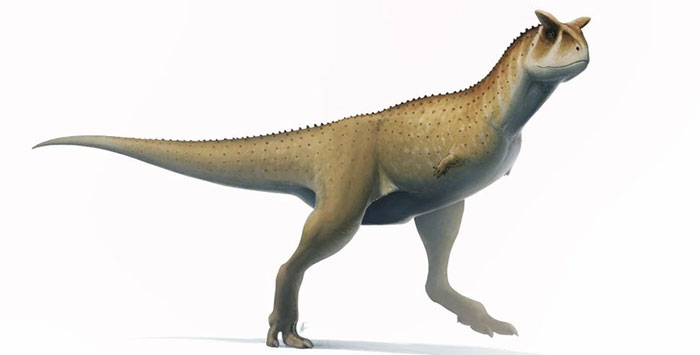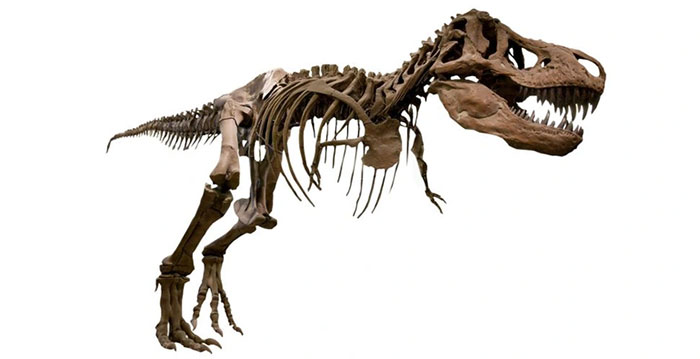Archaeologists have discovered the fossil of a peculiar dinosaur, with an unusual body structure compared to its relatives.
A new study by paleontologists in Argentina has unveiled an extraordinary dinosaur skull belonging to a “handless” carnivorous species that lived approximately 70 million years ago.

Guemesia ochoai dinosaur.
The newly discovered species, named Guemesia ochoai, is a member of the Abelisauridae family, a group of carnivorous dinosaurs that roamed areas corresponding to present-day South America, Africa, and India during that time.
However, G. ochoai differs from other dinosaurs in its genus in two main ways: it lacks the horn found on the top of its head and has a distribution in different regions. This suggests that these dinosaur groups may have inhabited diverse ecosystems.
G. ochoai also has particularly short arms, which are nearly useless for hunting or performing any other tasks. This characteristic reminds archaeologists of the Tyrannosaurus rex, which is known for its remarkably short arms compared to its massive body.

Tyrannosaurus rex with very short and weak forelimbs compared to the rest of its body.
With such small arms, Abelisaurids had to take down prey almost entirely with their skull and fearsome jaws. According to the initial description by researchers, the dinosaur G. ochoai may have charged directly at its prey, using its head as a weapon to deliver a powerful blow, stunning the animal.
To adapt to this predatory characteristic, the brain of G. ochoai is relatively small compared to its large skull, featuring rows of small holes at the front to help it cool down when necessary.
The discovery of G. ochoai and other unusual paleontological species, such as a giant turtle with a shell length of 1 meter in northern Argentina, highlights the unique characteristics of the late Cretaceous period.


















































